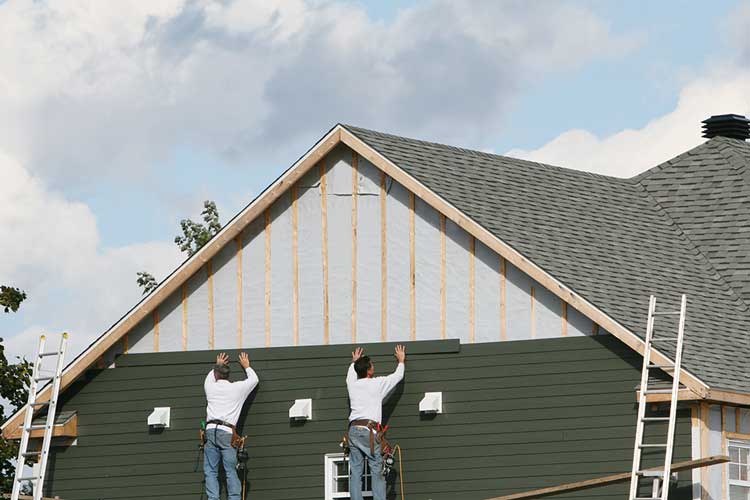Last updated January 2025
Planks for This? Find Durable, Attractive Exterior Siding and Pros to Install it
Think of siding as lipstick for your home’s exterior. Much like a swipe of red on your mouth, cladding your house in vinyl, wood, or a composite improves the structure’s look and protects it from the elements. Adding insulation underneath new siding can also reduce your heating and cooling bills.
Siding has come a long way since the tacky vinyl planks from the 1970s—or your great-great grandparents’ asbestos-laden stuff from the 1920s. Now you can have siding made of vinyl that you’d swear was wood, siding made with wood, wood shingles, engineered wood, or fiber cement.

Some pros and cons of each type:
- Vinyl
Pros: Inexpensive, durable, low maintenance, moisture-resistant
Cons: It looks like wood, but up close it’s still vinyl, poor fire resistance - Wood
Pros: Authentic-looking, versatile
Cons: Expensive, high maintenance, low durability, low moisture resistance, poor fire resistance - Engineered wood
Pros: Authentic-looking, versatile, needs lower maintenance than wood but more than vinyl, less costly than wood
Cons: Poor fire resistance - Fiber cement
Pros: Durable, long lifespan, high fire resistance, high moisture resistance
Cons: Cost, more difficult to install than other options, moderate maintenance needs
In general, vinyl siding is the cheapest, at about $3 to $8 per square foot, installed. Fiber cement and Nantucket-esque wood shingles are the priciest; figure $7 to more than $15 per square foot, installed. How much you’ll pay overall for your project of course depends on the size of your home and who you hire—our undercover shoppers find some home improvement contractors charge more than twice what others do for the same work.
Here’s how to find a contractor:
Determine what you need.
Inspect your house exterior carefully. Do you really need new siding, or can you just repaint or clean what’s already there? All siding, even vinyl, can be repainted. And it’s easy to refresh vinyl by removing grime.
If you’re certain it’s time to replace your siding, meet with several contractors to get ideas and product samples, and ask them for written cost proposals.
Details your contract should include:
Before signing any contract, check that it specifies:
- A fixed price for all work.
- Type and color of siding.
- Which direction it’ll be installed (vertically or horizontally).
- Whether the contractors are also responsible for painting new siding or removing old stuff.
- Exactly which areas of the house will be covered, using pictures or words.
- Type and weight of any insulation being installed underneath the siding.
- Whether the siding installer will also perform minor repairs to your home’s exterior before the siding is installed.
- When work will begin and how long it will take.
- Warranty on the siding materials and labor. Most manufacturers give 50-year warranties on siding products. Siding installers also offer guarantees of their work (usually from one to two years), but you may be able to get longer.
- That the contractor is responsible for a complete cleanup. Request a daily cleanup—so the area won’t become a mess over the course of the job. Poor cleanup is a problem survey respondents cite again and again.
- If your job requires a permit and inspection, specify in the contract that the company must secure a permit, and that the work must be inspected and approved before your final payment.
- Proof that the contractor carries workers’ compensation and general liability insurance.
- Whether subcontractors will be used and, if so, their identities.
- Payment schedule. Many siding installers allow customers to pay nothing until the entire job is completed. Although companies have standard policies on payment scheduling, most will alter them to accommodate customers with good credit standing. In particular, never let your payments get ahead of the completed work, and never pay in full until the job is completed.
- Also, check with your local building inspection office to determine whether a permit is necessary for your siding work. If so, include this requirement in the contract.
If you regret signing a contract, cancel it. If a siding installer solicited your business at your home, you are free to cancel until midnight of the third day after signing. Put your cancellation letter in writing. It is sufficient to get it in the mail within the three-day cancellation period, but send it via certified mail with return receipt, FedEx, UPS, or some other way that generates a record of the date you sent it and its receipt by the contractor.


